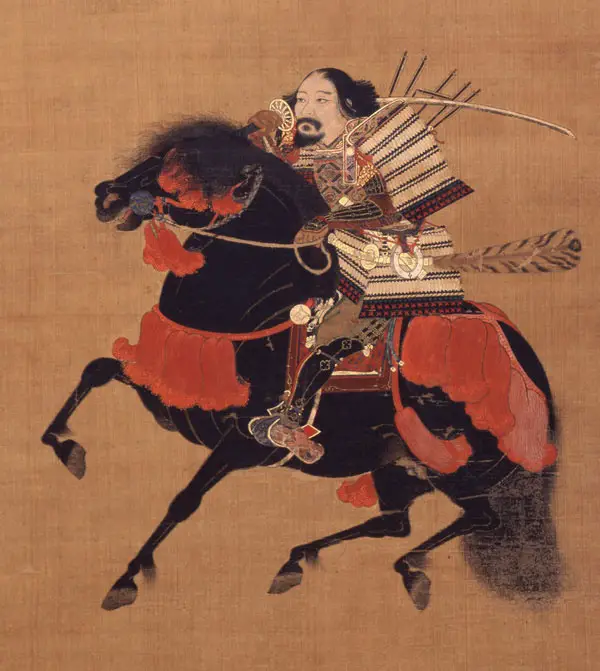The Ashikaga Shogunate: Two Centuries of Rulers
The Ashikaga shogunate ruled Japan for more than two centuries, presiding over a time of great change. 
The name of the shogunate came from the surname of Ashikaga Takauji (right), who declared himself shogun in 1336, after defeating Emperor Go-Daigo, who in the span of two short years went from a popular ruler to a pariah. Forces supporting the two men clashed in a series of battles, and Takauji's forces prevailed, to the extent that they seized the capital, Kyoto, and forced the emperor to flee. Go-Daigo did indeed flee, but he didn't leave the islands. Instead, he went south, to Yoshino, where he had still friends and supporters, and set up a rival imperial court, with himself as the head. Meanwhile, Takauji, himself shogun and the real power, nonetheless installed a new emperor, Komyo, in the north. Many historians refer to this time period in Japan as the Northern and Southern Courts era. Takauji reigned in the north, cementing his power. He was shogun for 20 years. During that time, he endured a split with his brother Tadayoshi, who had helped defeat Emperor Go-Daigo but then declared his allegiance to that very same emperor after a falling out with his brother; the brothers made up their differences after a couple of years. However, the internal strife proved enough of a distraction that southern forces were able to capture Kyoto and even Kamakura; once, twice and then three times, Takauji's forces retook both cities. In 1358, Takauji died, leaving his son Yoshiakira to carry on as shogun. It fell to Takauji's grandson Yoshimitsu to end the fighting, creating union between the Northern and Southern Courts in 1392. The third shogun proved to be the last of the strongmen who had begun the shogunate. After his reign ended, in 1394, the shogunate fell into a period of reduced influence, with the ambitious and powerful daimyo holding more and more of the trappings of rule. 
The death of shogun Ashikaga Yoshikazu at age 19, in 1425, created a succession crisis that the shogunate tried to solve by declaring the next ruler via a lottery. The already weakened shogunate found itself the object of ridicule, and enough warriors found it unsettling that they declared war on the shogun. The Onin War lasted a full decade and did nothing so much as reinforce the idea that the shogun had left their position of power and prestige. Further, civil war continued off and on for the better part of a century, in what is called the Sengoku period. The Ashikaga shogun clung to power but had nowhere near the sway or the prestige of the shogunate's initiator. As was the case with the earlier Kamakura shogunate, many of these shogun were leaders in name only and following the dictates of regents. In 1565 came the beginning of the end for the Ashikaga shogunate. In that year, yet another shogun came to power. This was Ashikaga Yoshiaki, the brother of the previous shogun, Yoshiteru. An ambitious daimyo named Oda Nobunaga had killed Yoshiteru and then given his backing to Yoshiaki, with the understanding that Nobunaga would be the real power in the land. Yoshiaki had other ideas, continuing to perform some services as shogun, including acting as mediator between warring clans. Nobunaga bided his time, gained enough backing, and overthrew Yoshiaki in 1573. The last shogun fled to supportive friends in the west, and Oda Nobunaga stood alone at the top. |
|
Social Studies for Kids
copyright 2002–2025
David White




